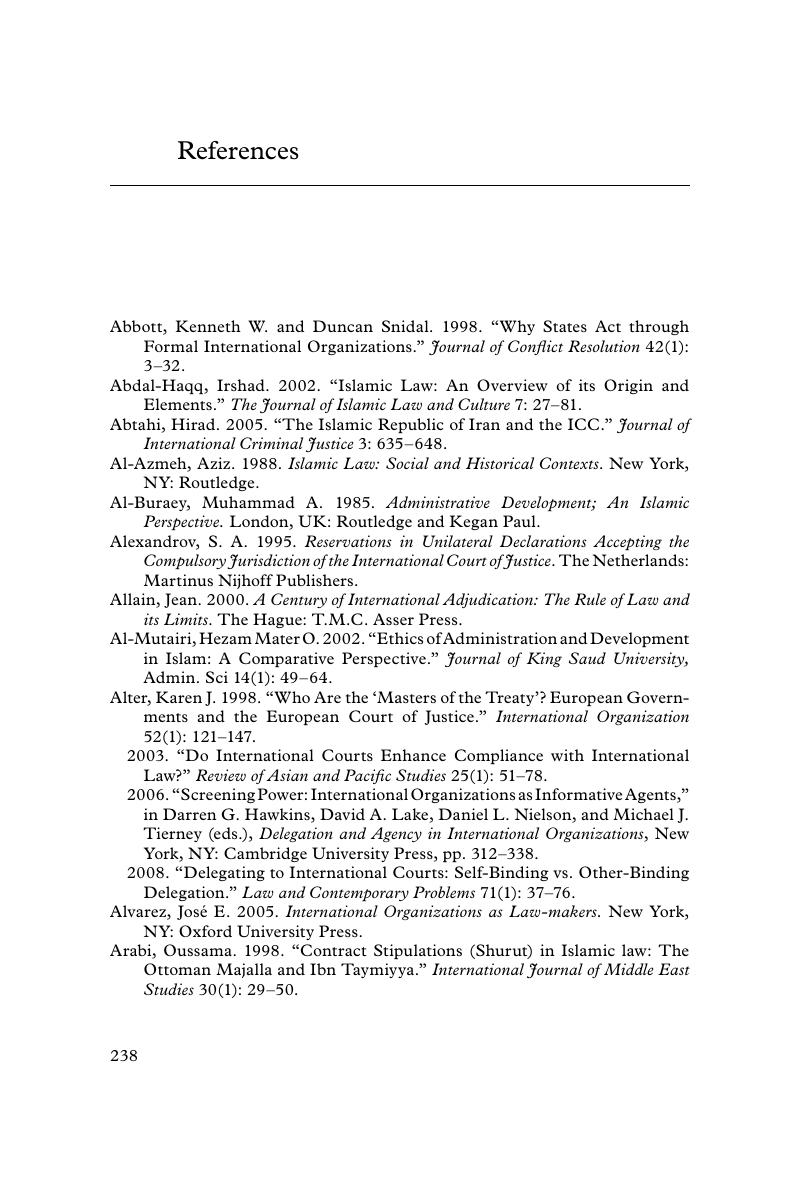Book contents
- Frontmatter
- Contents
- List of figures
- List of tables
- List of boxes
- Acknowledgments
- List of acronyms
- 1 The creation and expansion of international courts
- 2 Major legal traditions of the world
- 3 A rational legal design theory of international adjudication
- 4 Domestic legal traditions and the creation of the International Criminal Court
- 5 Domestic legal traditions and state support for the World Court
- 6 The rational design of state commitments to international courts
- 7 The consequences of support for international courts
- 8 Conclusion
- References
- Index
- References
References
Published online by Cambridge University Press: 21 April 2011
- Frontmatter
- Contents
- List of figures
- List of tables
- List of boxes
- Acknowledgments
- List of acronyms
- 1 The creation and expansion of international courts
- 2 Major legal traditions of the world
- 3 A rational legal design theory of international adjudication
- 4 Domestic legal traditions and the creation of the International Criminal Court
- 5 Domestic legal traditions and state support for the World Court
- 6 The rational design of state commitments to international courts
- 7 The consequences of support for international courts
- 8 Conclusion
- References
- Index
- References
Summary

- Type
- Chapter
- Information
- Domestic Law Goes GlobalLegal Traditions and International Courts, pp. 238 - 254Publisher: Cambridge University PressPrint publication year: 2011



